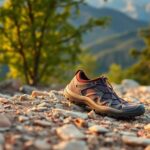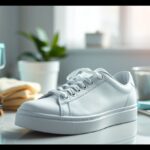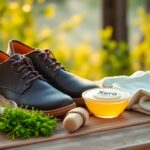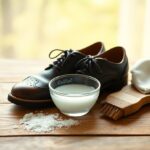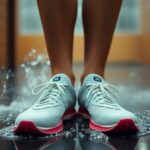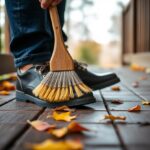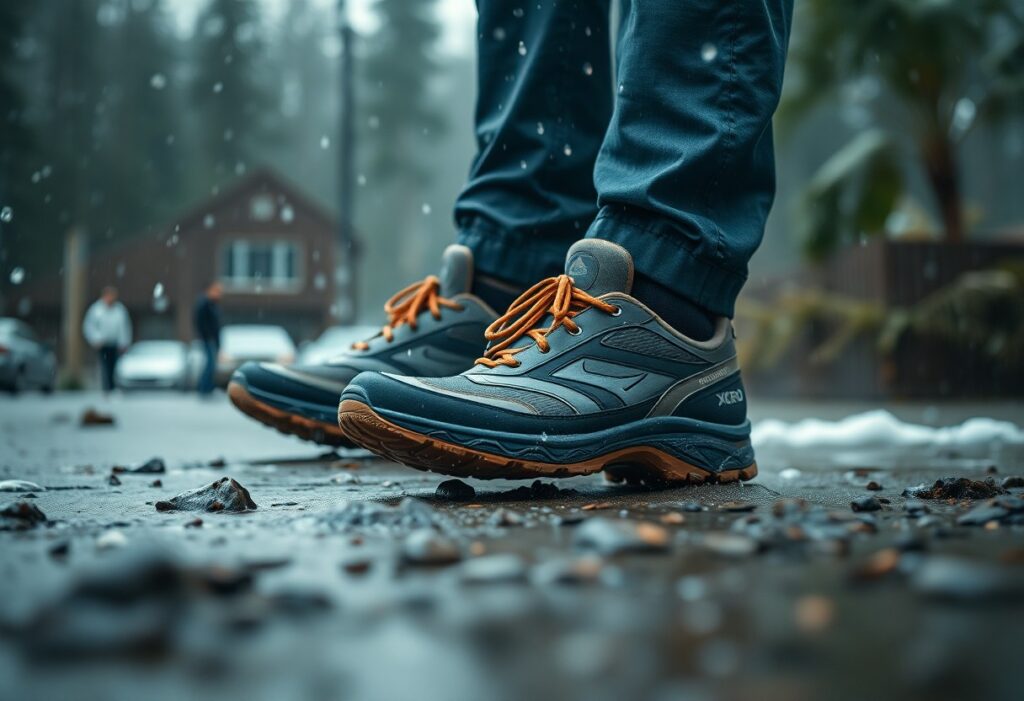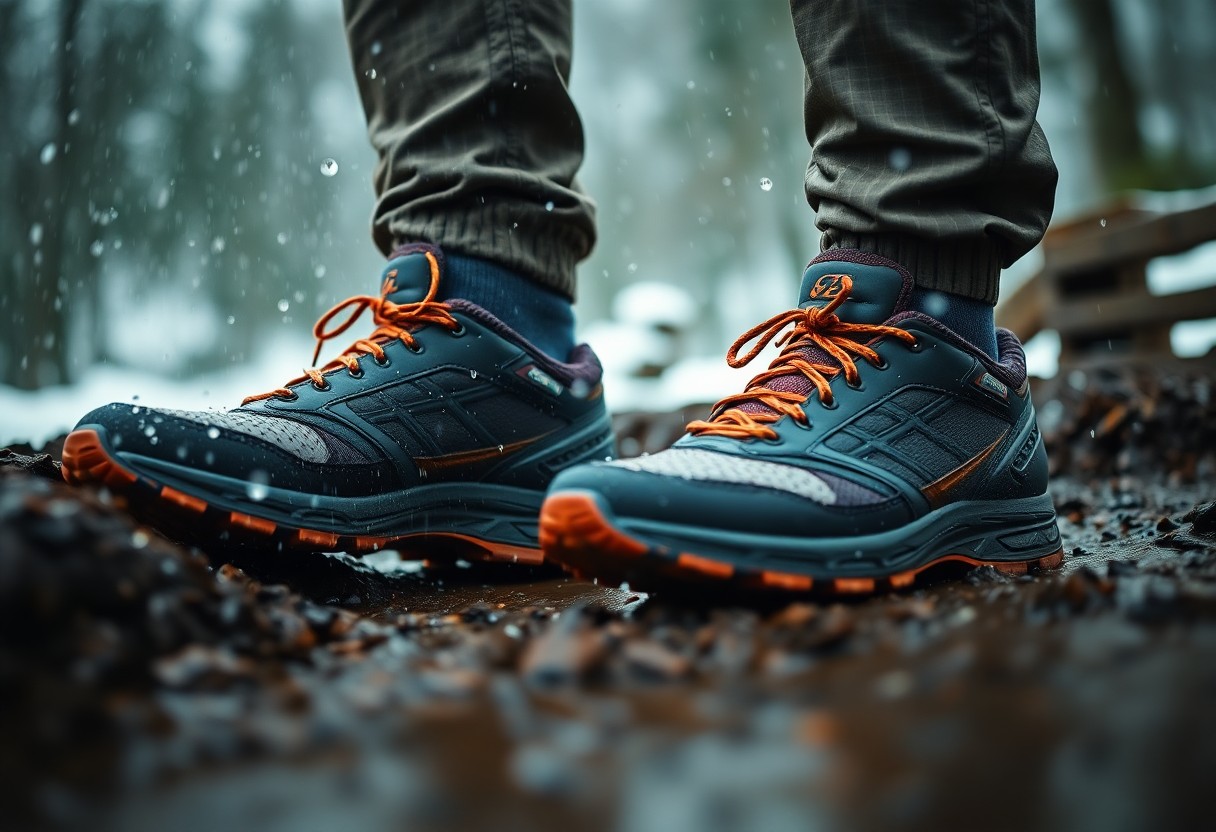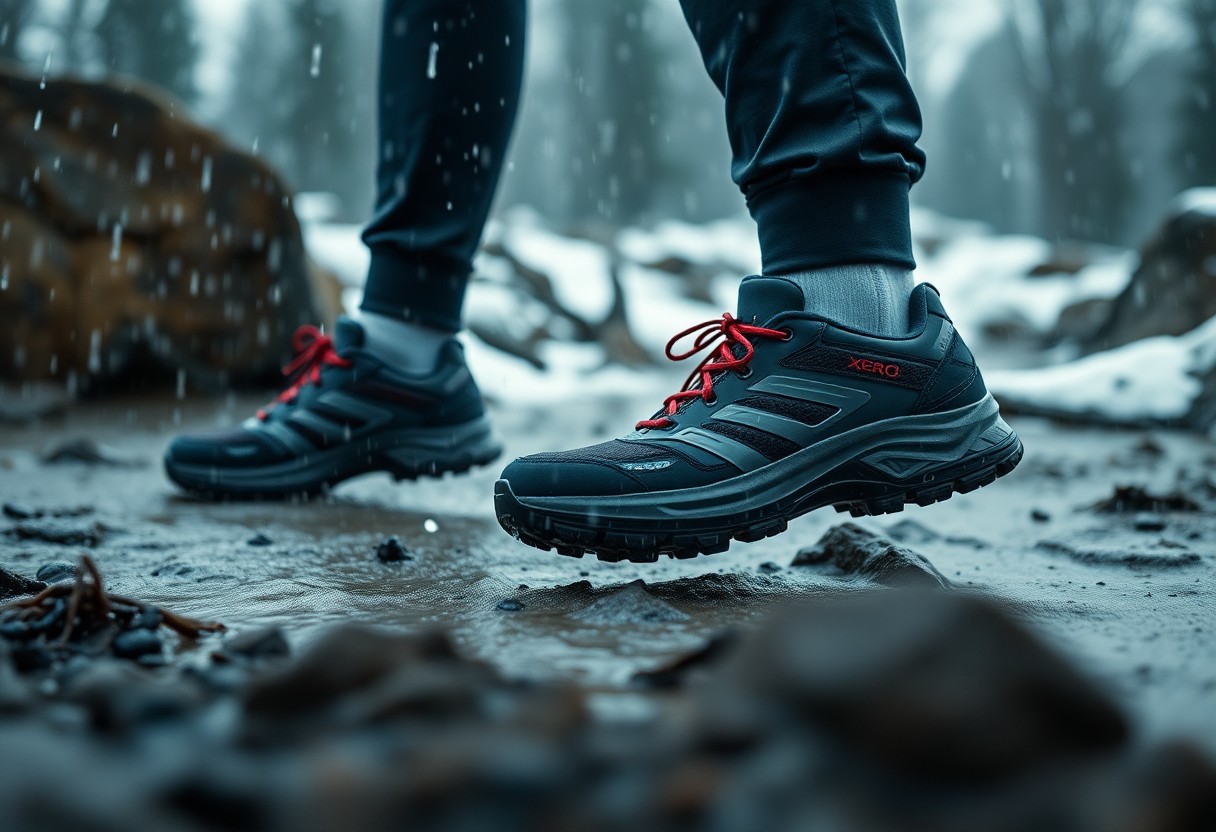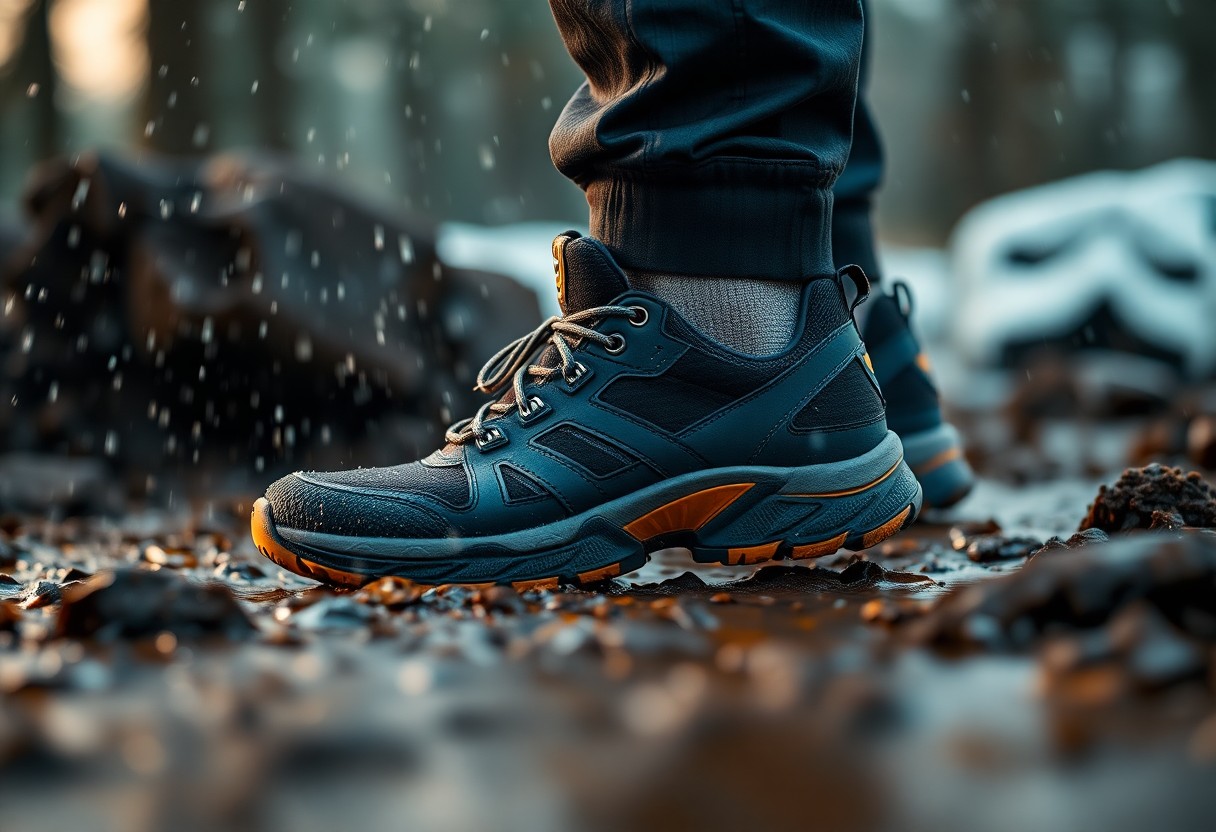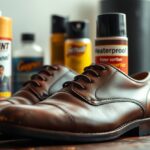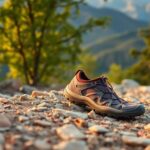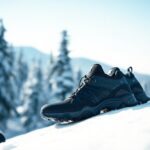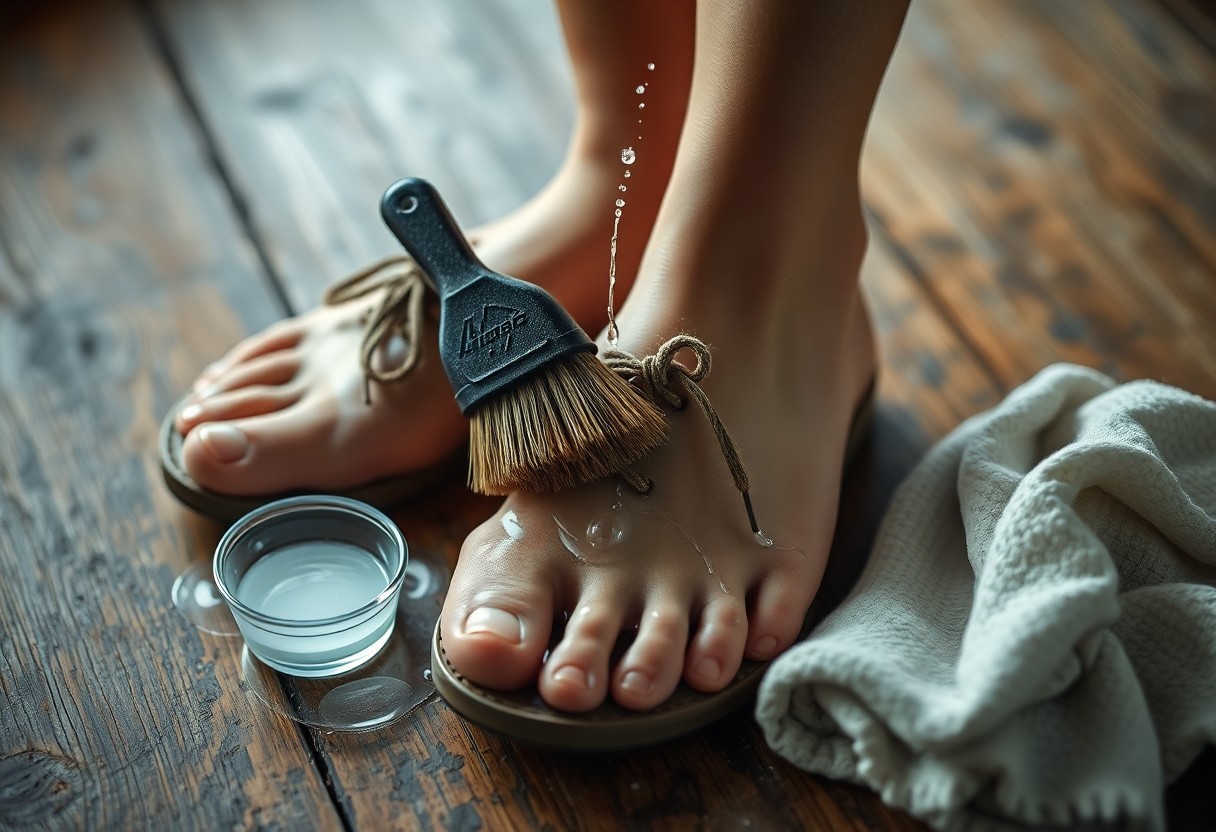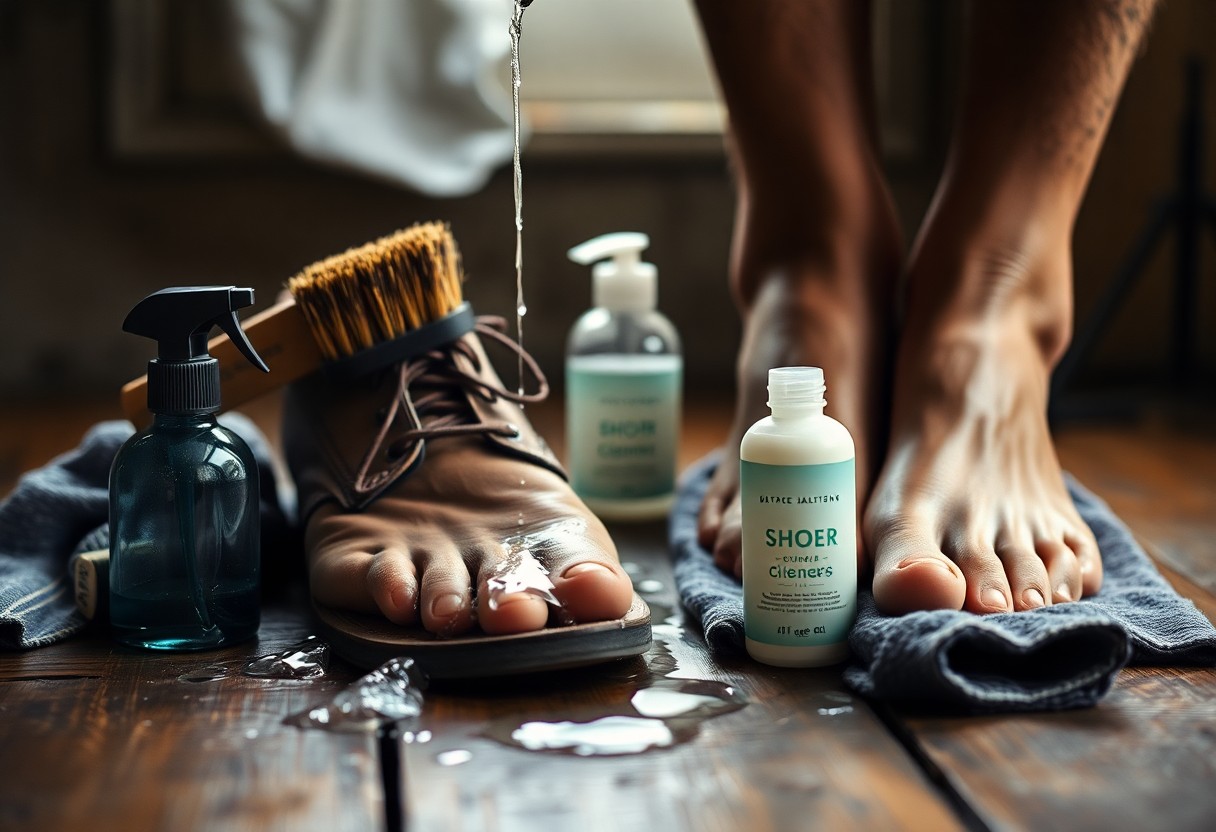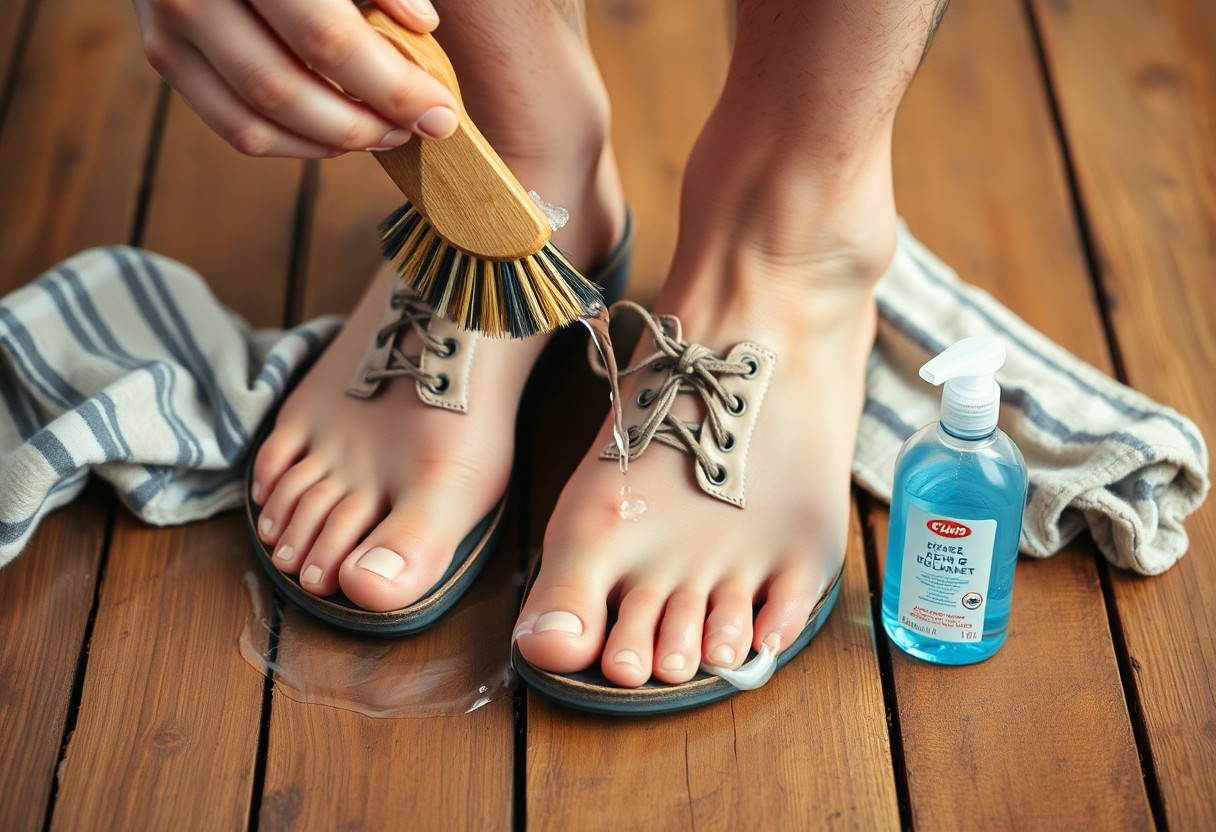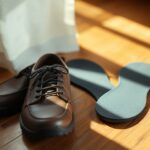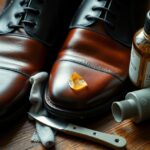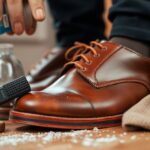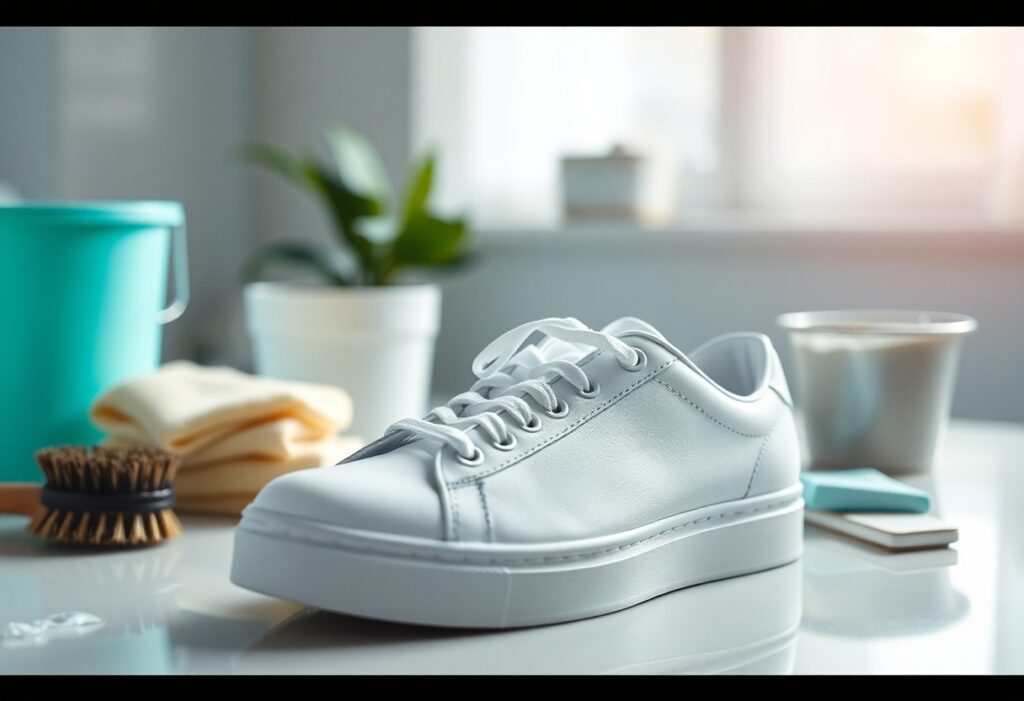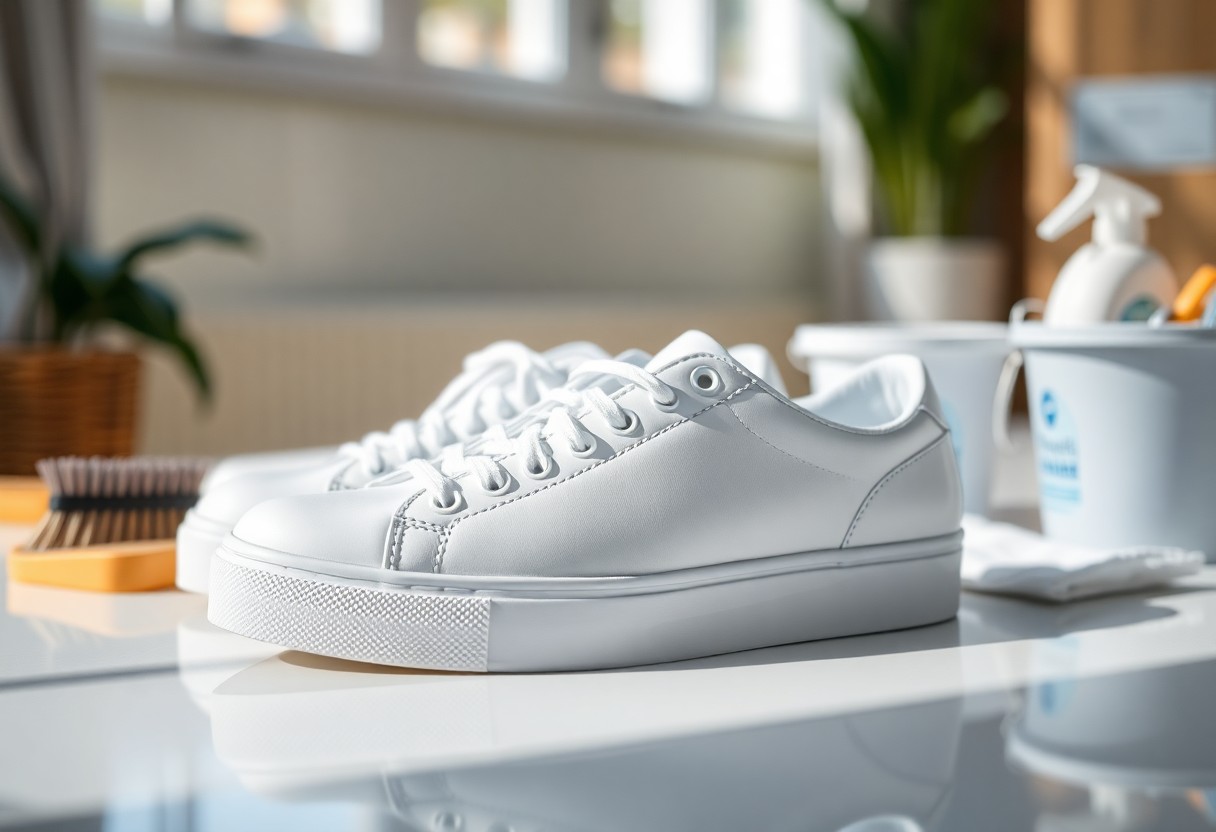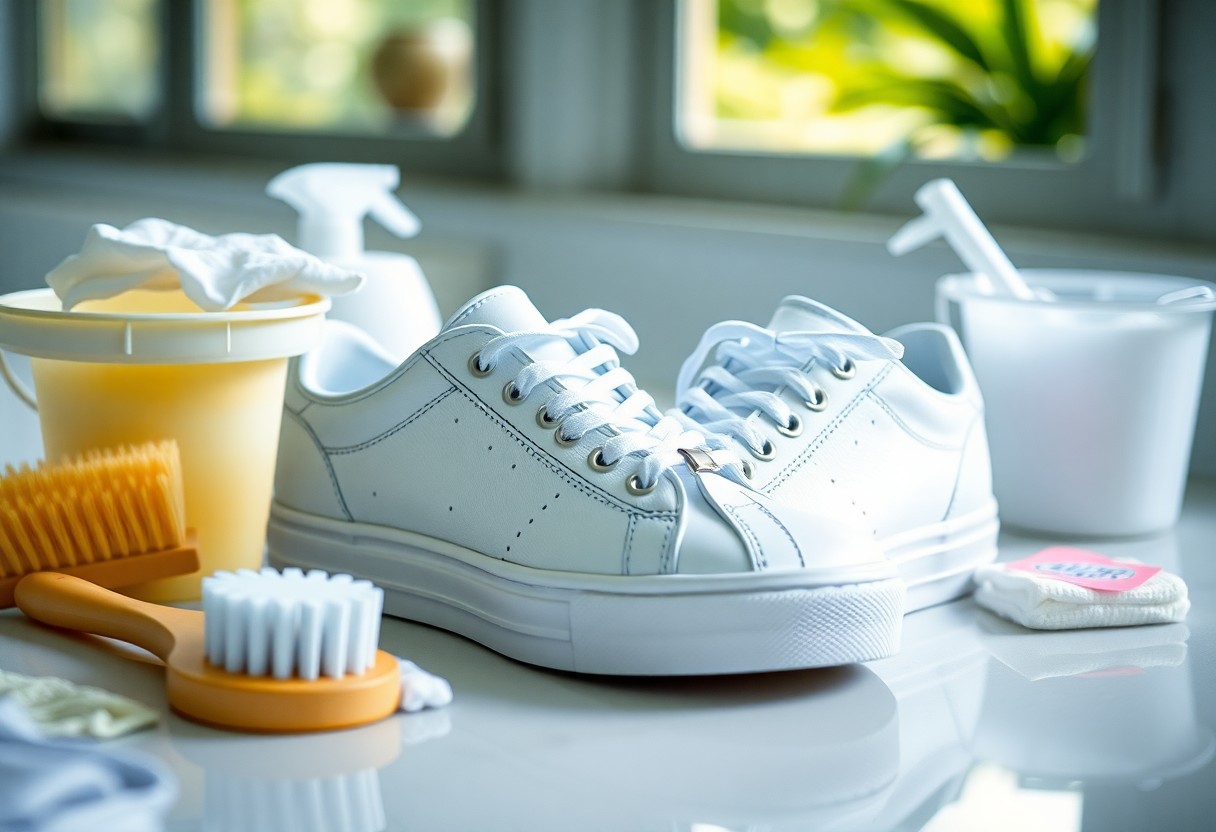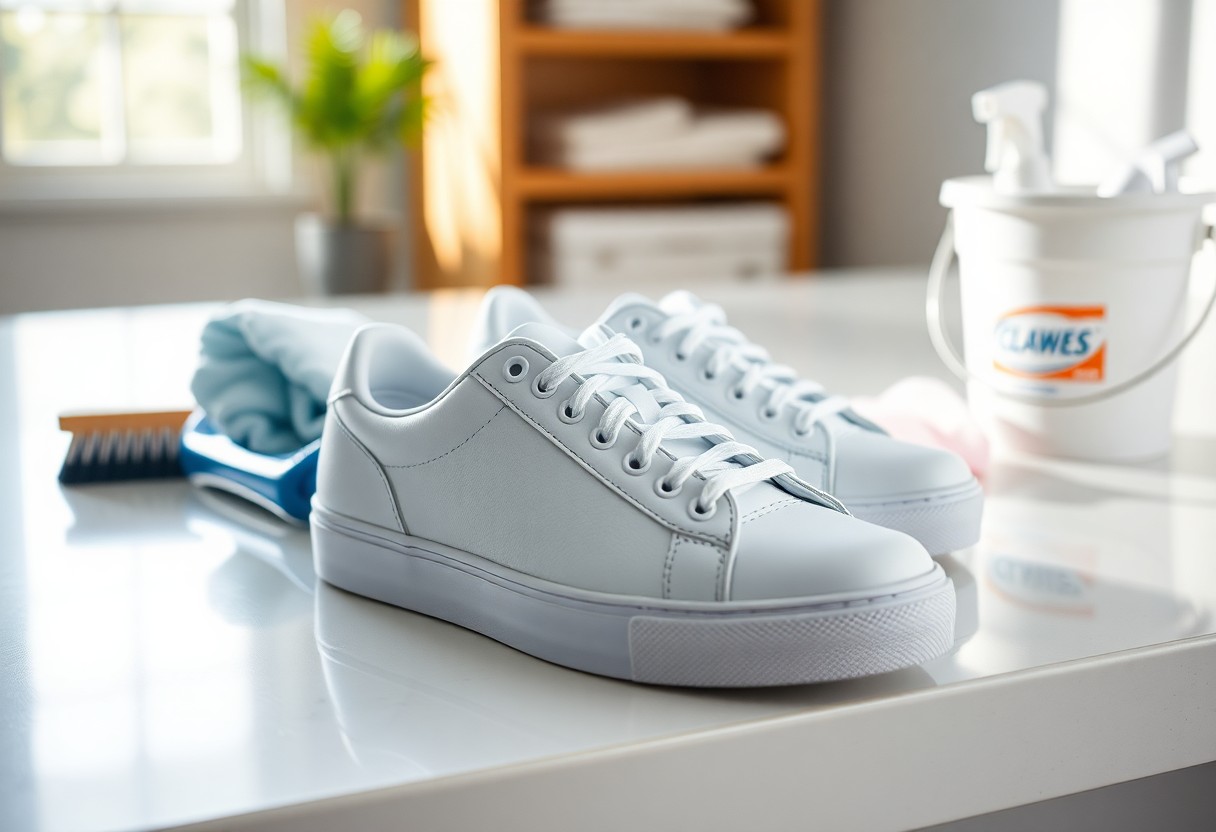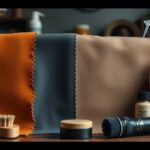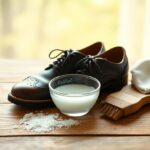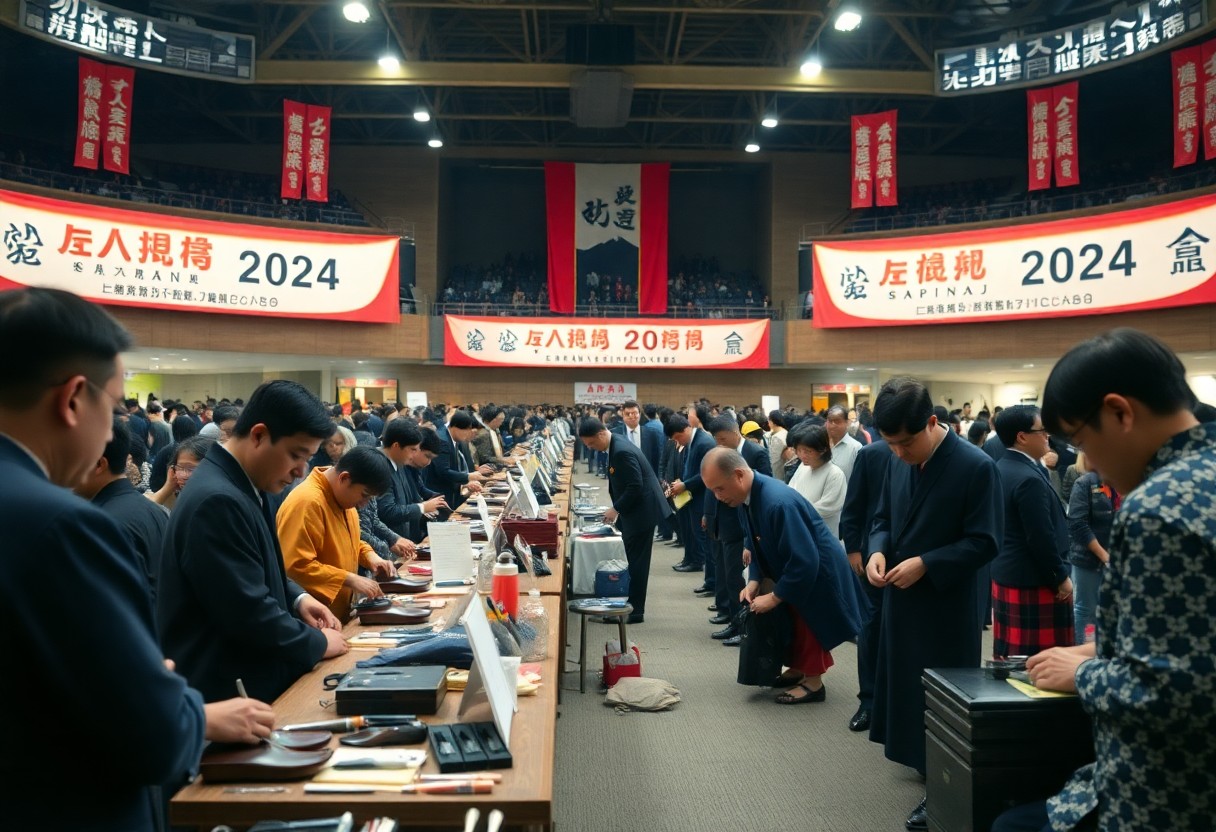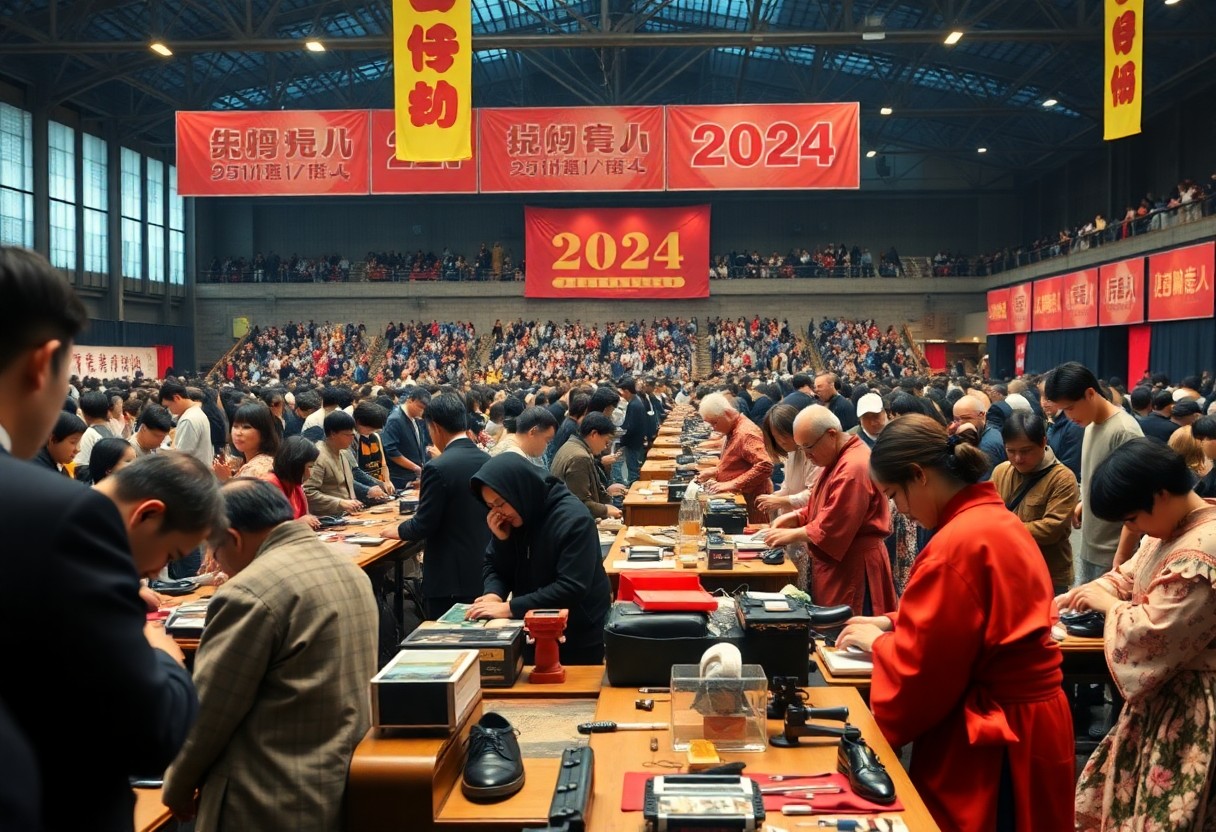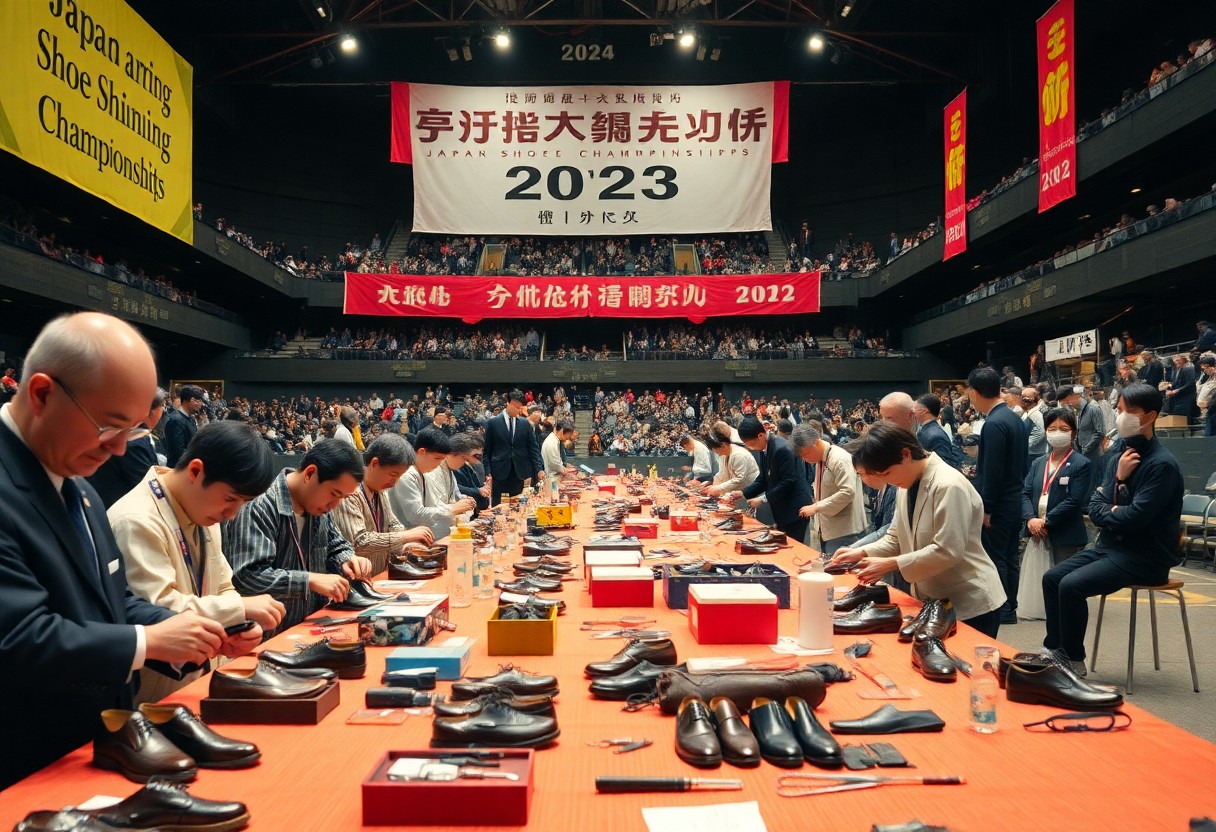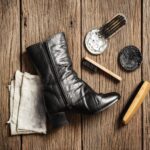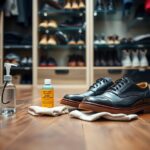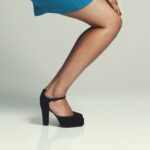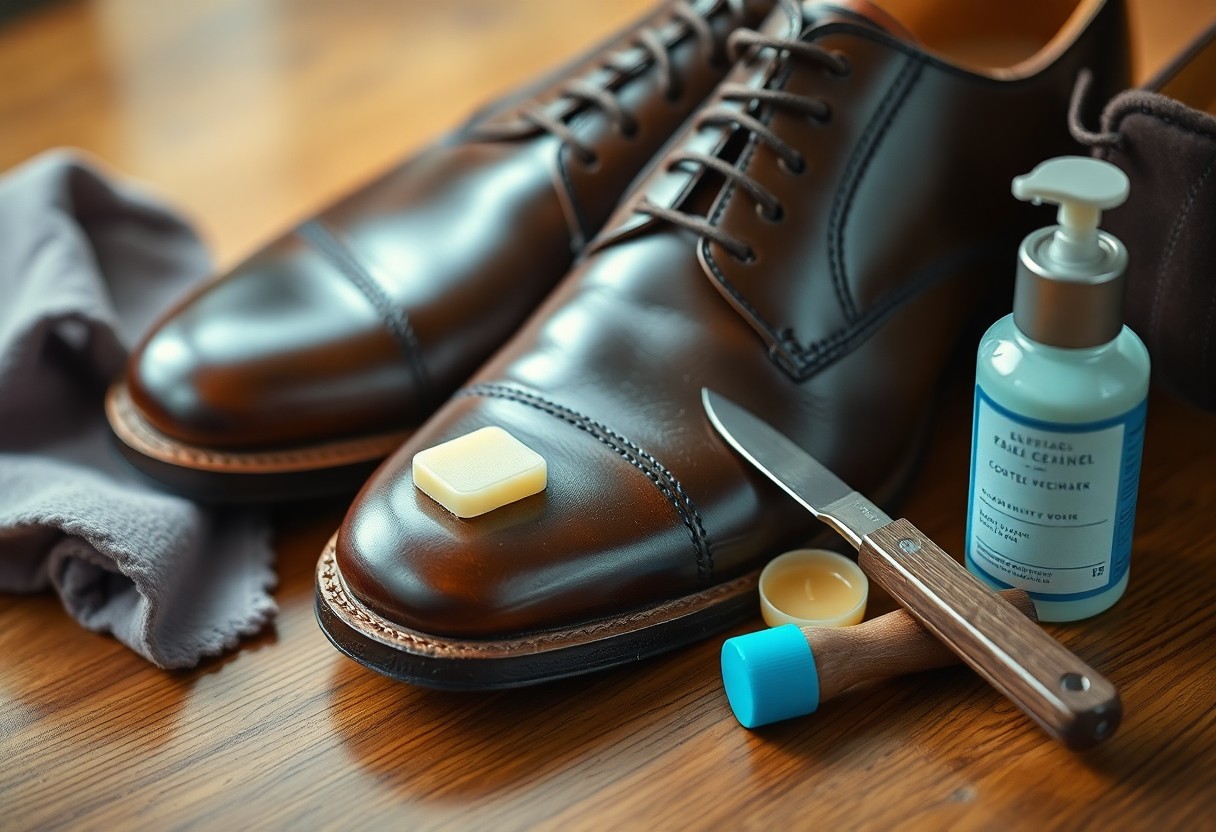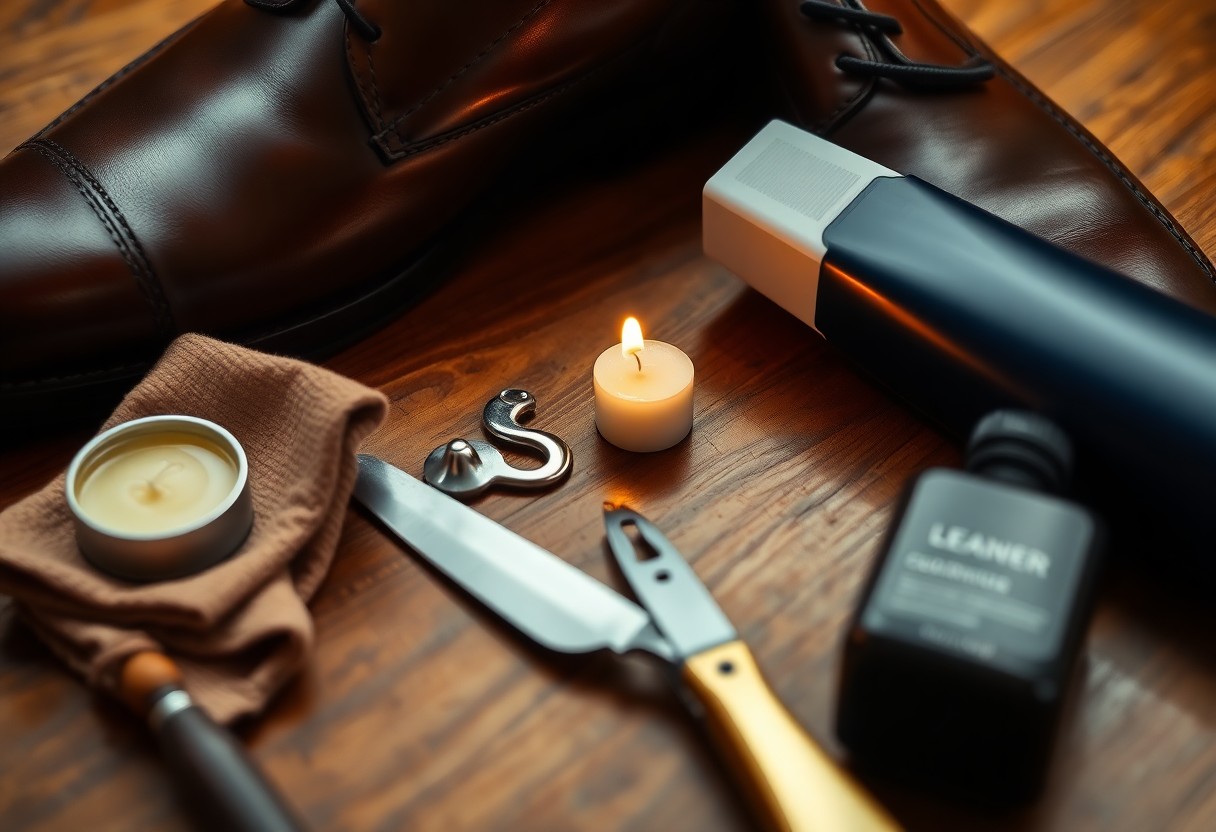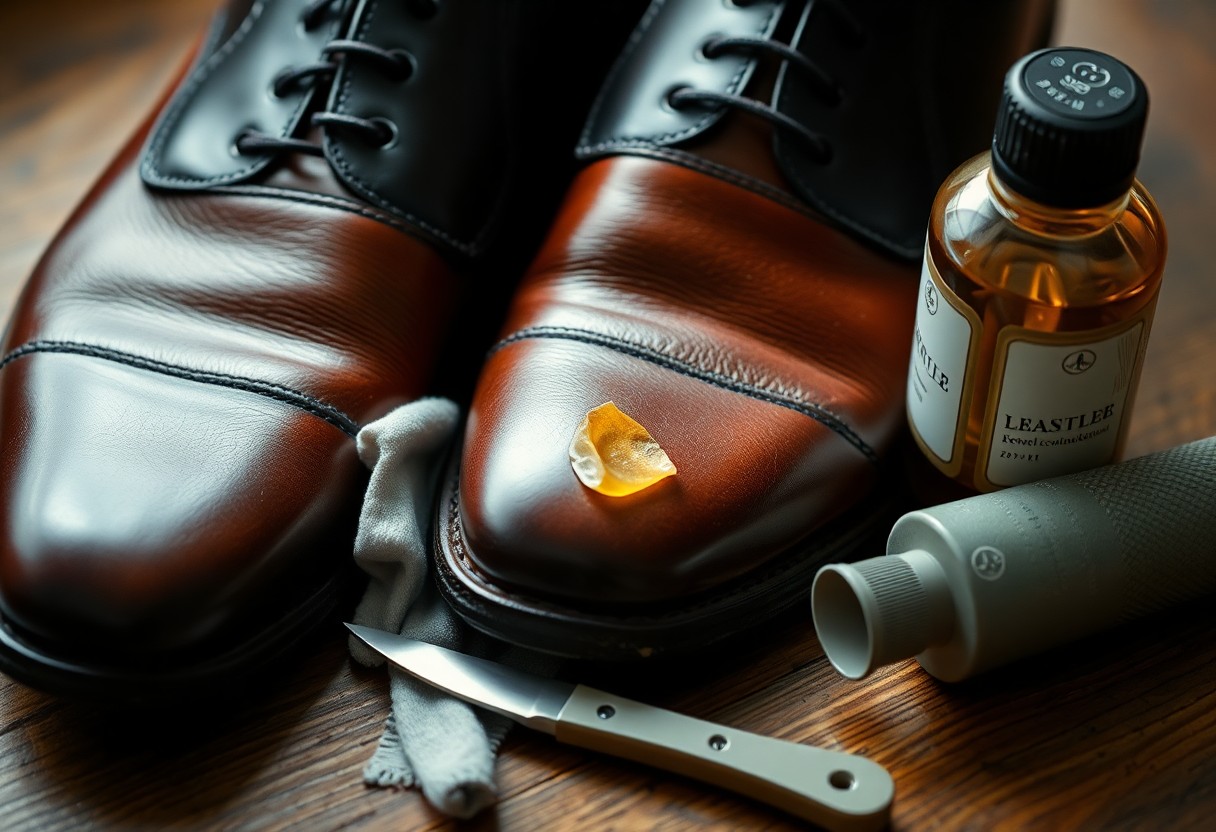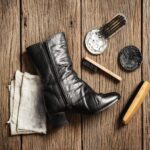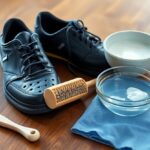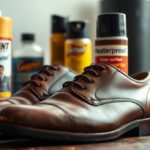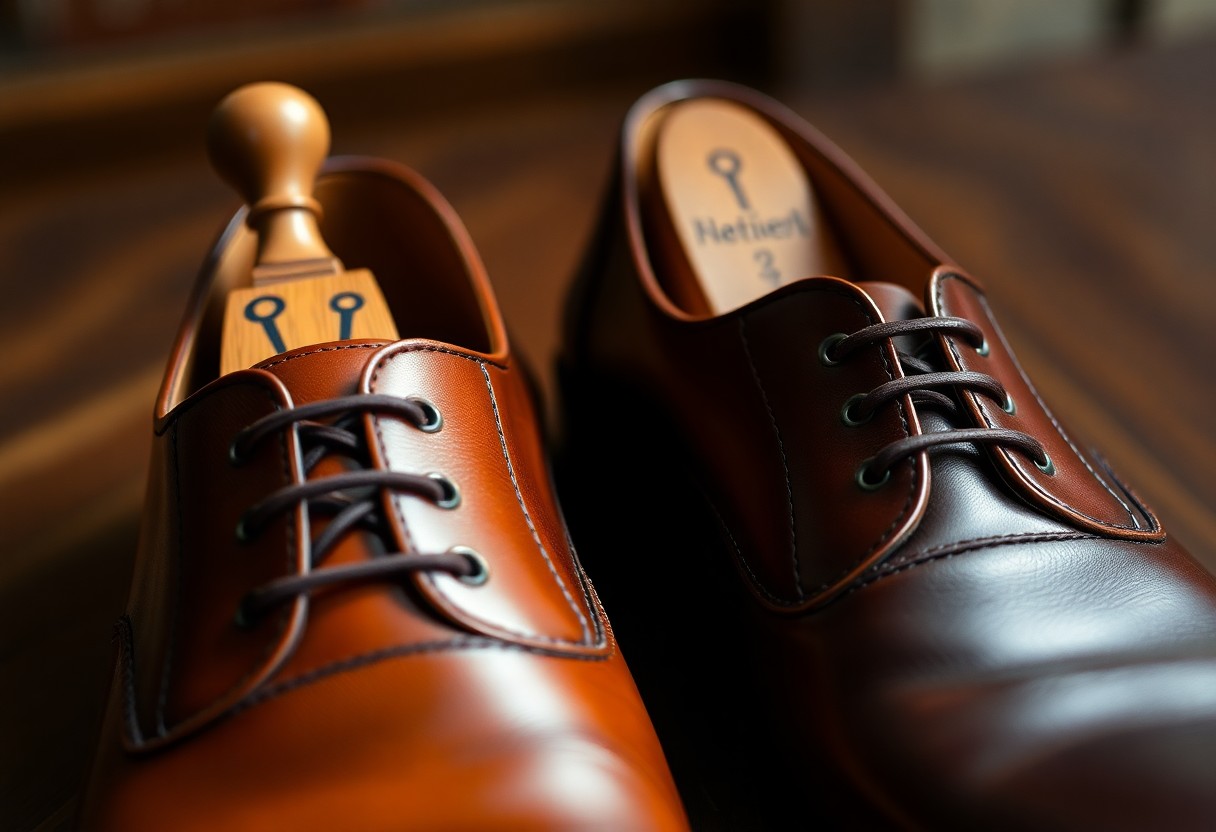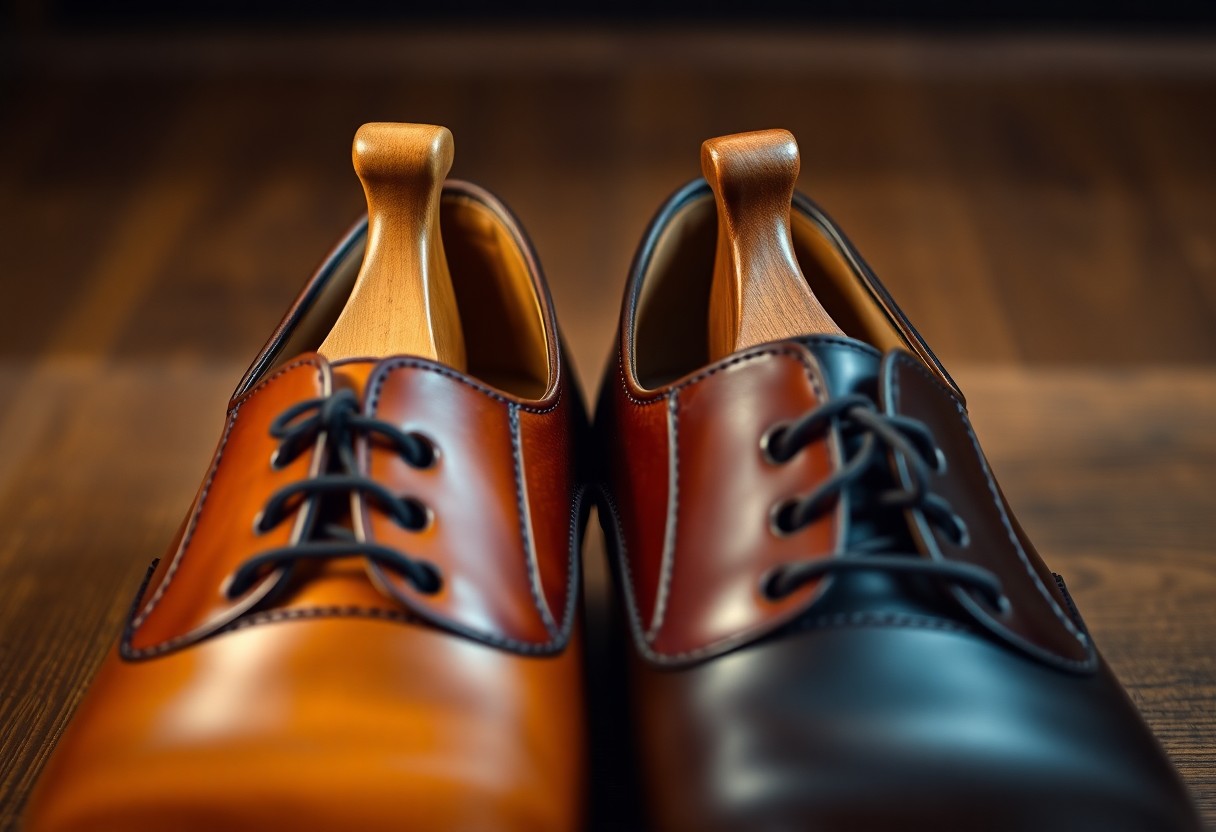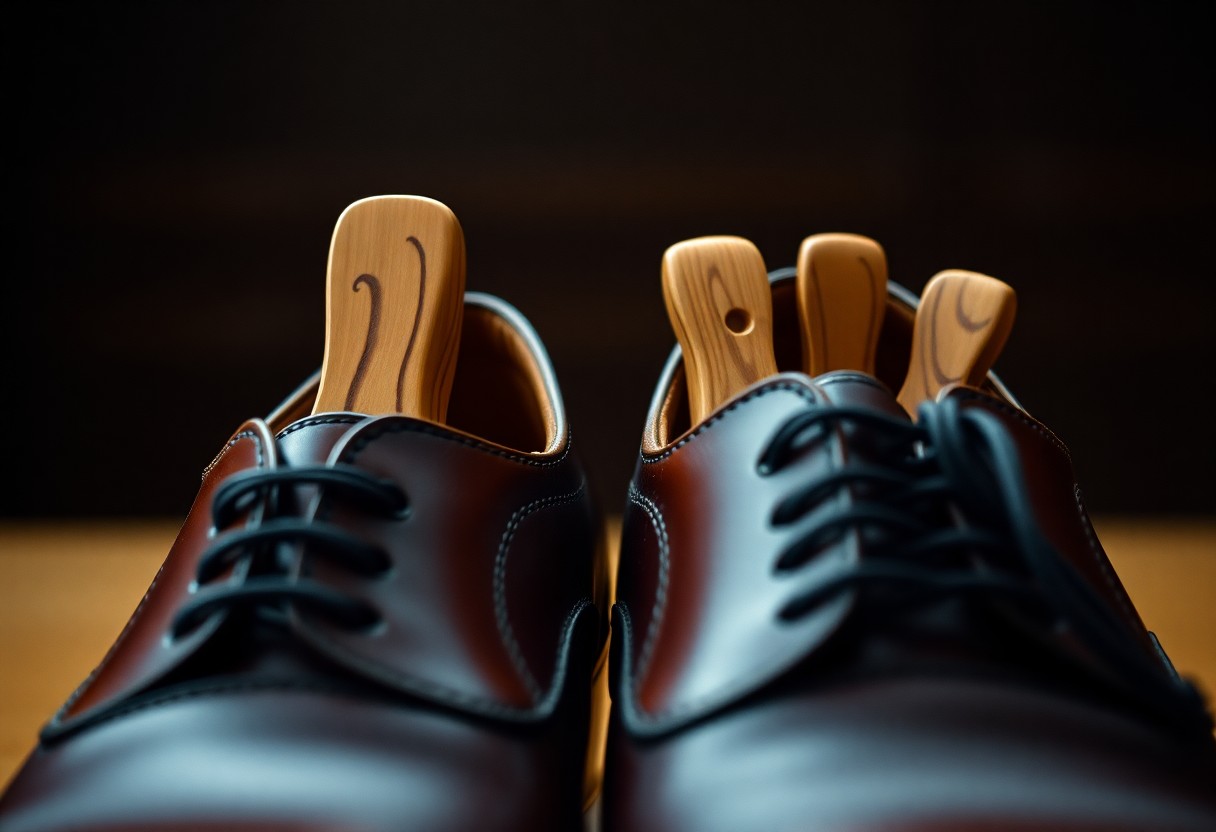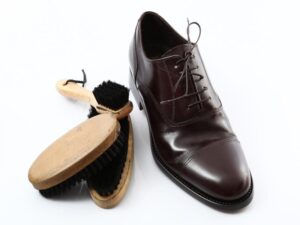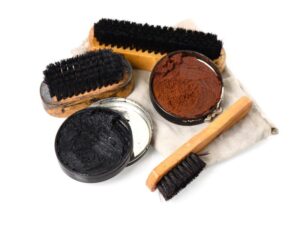Explore the Premium Materials That Elevate Xero Shoes to the Next Level
Understanding the Essential Components of Xero Shoes
Xero Shoes are meticulously designed using an array of superior, minimalist materials that aim to provide a barefoot-like experience while walking. These exceptional footwear options typically feature a blend of both natural and synthetic elements, including breathable mesh, lightweight rubber, and durable textiles. The innovative integration of these materials is crucial, as it greatly enhances the flexibility and comfort of the shoes, thereby fostering natural foot movement. Notably, the outsoles are often crafted from a unique rubber blend that delivers remarkable traction while keeping a low profile, making them perfect for navigating a variety of terrains effectively.
When assessing the materials utilized in Xero Shoes, it’s essential to note that the upper sections frequently utilize quick-drying fabrics. This quality is particularly advantageous for individuals involved in outdoor activities where exposure to moisture is inevitable. Furthermore, the construction methods employed ensure that seams are fortified, adding an extra layer of durability. The materials prioritize not only a minimalist aesthetic but also high performance, making Xero Shoes an ideal option for both adventurers and casual users alike. Gaining insight into the material composition of Xero Shoes is fundamental to appreciating their performance in wet circumstances and their overall lifespan.
Impact of Water on the Performance of Xero Shoes
Water exposure can significantly influence the performance and longevity of Xero Shoes. While these shoes are engineered to endure a range of conditions, persistent exposure to moisture can pose several challenges. For instance, excessive dampness can lead to the materials soaking up water, which may result in increased weight and diminished performance during activities. Additionally, internal components like cushioning may degrade more rapidly when frequently exposed to water without appropriate maintenance.
Another critical consequence of water on Xero Shoes is the increased risk of odor and mold growth. When shoes remain damp for prolonged periods, they create a perfect environment for bacteria and fungi to thrive. This not only jeopardizes the hygiene of the footwear but could also lead to skin issues for the wearer. Therefore, comprehending the interactions between water and the materials utilized in Xero Shoes is vital for maintaining their condition and extending their lifespan. Adopting proper care techniques and quick-drying strategies can alleviate these issues, enabling users to enjoy their footwear worry-free.
Advantages of Water-Resistant Materials in Xero Shoes
The integration of water-resistant materials in Xero Shoes offers numerous advantages, enhancing both the durability of the footwear and the comfort experienced by the wearer. The primary mechanism for achieving water resistance is through the careful selection of fabrics and the application of protective coatings that efficiently repel moisture. This feature is especially beneficial for those engaged in outdoor activities like hiking, trail running, or walking in wet environments, as it helps maintain a dry and comfortable atmosphere for the feet.
One of the significant benefits of employing water-resistant materials is their ability to safeguard the structural integrity of the shoes. By preventing water from penetrating the materials, wearers can avoid issues such as stretching, warping, and loss of shape, which are common in moist settings. Additionally, moisture-resistant shoes typically dry out more quickly, minimizing downtime between uses. This is particularly advantageous for travelers or outdoor enthusiasts who may face unpredictable weather conditions.
Furthermore, water-resistant Xero Shoes can boost traction on slippery surfaces, offering users increased grip and confidence while navigating diverse terrains. This blend of durability and comfort makes them a favored choice for individuals seeking both functionality and style in their footwear. Ultimately, the utilization of water-resistant materials contributes to a reliable and enjoyable user experience, regardless of environmental conditions.
Expert Insights on the Performance of Xero Shoes in Wet Conditions
Real-Life Experiences with Water Exposure in Xero Shoes
Xero Shoes have undergone rigorous testing, showcasing their capacity to withstand various scenarios involving water exposure, which demonstrates their resilience across multiple environments. Users have shared favorable experiences in situations such as:
- Hiking through wet trails during rainy seasons, where the shoes effectively repelled water while ensuring excellent traction.
- Wading through shallow streams while camping, with the shoes drying quickly after being submerged.
- Running in dewy grass fields, where the moisture did not compromise the shoe’s performance or comfort.
- Participating in obstacle races that included mud pits, illustrating the shoes’ durability under challenging conditions.
These examples highlight that while Xero Shoes are not completely waterproof, they can handle significant moisture without compromising their structural integrity. Proper maintenance following exposure, such as immediate drying and cleaning techniques, can further enhance their longevity and performance. Users have noted that drying the shoes promptly after exposure and avoiding prolonged contact with water is crucial for maintaining their quality.
With the right care and knowledge, adventurers can confidently wear Xero Shoes in damp conditions, reassured of their resilience to handle the unexpected. This combination of real-world application and proactive maintenance ensures that wearers can continue to explore the outdoors without concerns about their footwear.
Effective Techniques for Drying Xero Shoes After Water Exposure
Properly drying Xero Shoes after they come into contact with water is vital for maintaining their quality and prolonging their lifespan. Here are practical methods to effectively dry these shoes:
- Remove the insoles: Taking out the insoles allows both the insoles and the shoes to air out and dry more efficiently.
- Shake off excess water: Gently shaking the shoes helps eliminate any remaining moisture trapped inside.
- Use absorbent materials: Stuffing the shoes with newspaper or cloth can absorb moisture from within, accelerating the drying process.
- Air dry in a ventilated area: Placing the shoes in a well-ventilated space away from direct sunlight is ideal for preventing damage from heat.
Following these methods ensures that moisture does not linger, which can lead to unpleasant odors or mildew. It’s essential to avoid using direct heat sources, such as radiators or hair dryers, as these can warp the materials and compromise their integrity. Instead, allowing the shoes to air dry naturally promotes a healthy drying process, preserving the shape and functionality of Xero Shoes.
Additionally, considering the climate is crucial. In humid conditions, drying may take longer; thus, changing out the absorbent materials periodically can be beneficial. By implementing these proactive steps, wearers can protect their investment in Xero Shoes and ensure they are ready for future adventures.
Expert Insights on the Durability of Xero Shoes Materials
The durability of Xero Shoes materials when exposed to moisture is a critical factor in determining their overall performance and lifespan. The materials employed in these shoes, including breathable mesh and specialized rubber, are engineered to withstand exposure to water while maintaining their structural integrity. This analysis is rooted in the inherent properties of the materials, designed to resist wear and degradation typically associated with moisture.
For example, the proprietary rubber utilized in the outsoles is not only resilient but also formulated to maintain traction even when wet. This characteristic is essential for outdoor activities where slipping can occur. The upper materials, while lightweight, are reinforced to prevent tearing during high-intensity activities. Understanding these elements helps users appreciate the design and technology behind Xero Shoes, particularly in wet conditions.
When users are informed about the specific properties of the materials, they can make educated decisions regarding care and maintenance. Regular cleaning and prompt drying can further enhance the shoes’ lifespan, allowing wearers to enjoy their Xero Shoes for many years to come. Additionally, incorporating practices such as applying water repellents can bolster the shoes’ resilience against moisture, making them suitable for a variety of environments and activities.
Strategies for Caring for Wet Xero Shoes
Best Practices for Drying Xero Shoes Effectively
The most effective drying techniques for Xero Shoes involve a careful approach to ensure that the materials remain intact and functional. Air drying is the most recommended method, as it encourages natural moisture evaporation without risking damage to the shoe structure. When drying Xero Shoes, it’s crucial to follow these effective practices:
- Remove insoles and laces: This allows for improved airflow and quicker drying times.
- Utilize absorbent materials: Stuffing the shoes with dry towels or newspapers can assist in moisture absorption.
- Avoid direct heat sources: Keeping the shoes away from radiators or direct sunlight is essential to prevent material warping.
- Dry in a well-ventilated area: Ensuring good air circulation around the shoes promotes even drying and reduces the possibility of mildew.
These methods are vital for maintaining the integrity of Xero Shoes. Proper drying techniques not only help preserve the shape and functionality of the shoes but also prevent unpleasant odors and the growth of mold. Additionally, it’s important to periodically check the shoes during the drying process, especially in humid conditions, to ensure effective drying. By adopting these best practices, users can significantly enhance the longevity and performance of Xero Shoes, allowing for continued enjoyment across various conditions.
Effective Cleaning Techniques for Wet Xero Shoes
Cleaning wet Xero Shoes requires thoughtful techniques to maintain the materials while ensuring they remain fresh and functional. Given that these shoes often encounter dirt and moisture, a gentle cleaning routine is essential. Here are effective cleaning methods to consider:
- Use mild soap and water: A solution of warm water and gentle soap is ideal for cleaning the exterior without damaging the materials.
- Employ a soft brush: A soft-bristled brush can assist in removing dirt from crevices without scratching or harming the surface.
- Rinse thoroughly: After cleaning, it’s crucial to rinse off any soap residue to prevent build-up, which can affect performance.
- Allow to air dry after cleaning: Let the shoes dry naturally instead of placing them in a dryer, to avoid heat damage.
By incorporating these cleaning techniques, wearers can maintain the appearance and functionality of their Xero Shoes, even after exposure to water. Keeping the shoes clean is not just about aesthetics; it also plays a critical role in preventing odors and prolonging the life of the footwear.
Moreover, it’s advisable to regularly inspect the shoes for any signs of wear and tear, particularly following cleaning. This proactive approach can help users address minor issues before they escalate, ensuring their Xero Shoes remain in optimal condition for every adventure.
Strategies for Preventing Mold and Odor in Xero Shoes
Preventing mold and odor in wet Xero Shoes is essential for maintaining hygiene and comfort. Moisture can lead to the proliferation of bacteria and mold, which compromises the quality of the footwear. Here are practical strategies to keep shoes fresh:
- Ensure thorough drying after exposure: Make sure shoes are completely dry before storing them to prevent mold growth.
- Utilize natural deodorizers: Sprinkling baking soda inside the shoes can help absorb moisture and neutralize odors.
- Store in a breathable environment: Keeping Xero Shoes in a well-ventilated area helps prevent stagnant moisture.
- Regularly clean and inspect: Periodic cleaning and checking for dampness or mold will help catch issues early.
These strategies are vital for ensuring that Xero Shoes remain not only functional but also pleasant to wear. Implementing proper drying techniques immediately after moisture exposure can significantly reduce the chances of developing mold, while the use of natural deodorizers can keep the interior fresh.
Being proactive about shoe care is crucial for anyone who frequently wears Xero Shoes in wet conditions. By following these steps, wearers can enhance their overall experience, ensuring comfort and longevity in their footwear.
Best Practices for Storing Wet Xero Shoes
Properly storing wet Xero Shoes is a fundamental aspect of shoe care that can prevent damage and extend the longevity of the footwear. Even after cleaning and drying, the manner in which the shoes are stored can significantly impact their condition. Here are key practices for storing wet Xero Shoes:
- Ensure they are dry: Before storing, always confirm that the shoes are completely dry to avoid mold and mildew.
- Store in a well-ventilated area: Choose a location that allows for air circulation to help keep shoes fresh.
- Avoid airtight containers: Never seal wet shoes in airtight bags or containers, as this traps moisture and encourages mold growth.
- Use shoe trees or stuff with paper: Using shoe trees or stuffing the shoes with paper helps maintain their shape while allowing air circulation.
These storage practices are critical for maintaining the quality of Xero Shoes. Proper ventilation and attention to moisture levels are essential factors in preventing deterioration. Regularly checking on stored shoes ensures that they remain in optimal condition, ready for any adventure.
By adhering to these guidelines, wearers can enjoy peace of mind knowing that their Xero Shoes are protected, ultimately enhancing their outdoor pursuits.
Steps for Reconditioning Wet Xero Shoes
Reconditioning wet Xero Shoes is an important step in preserving their flexibility and preventing damage caused by moisture. When shoes become wet, it can lead to stiffness in the materials, which may adversely affect performance. Here’s how to effectively recondition wet Xero Shoes:
- Reshape while drying: As the shoes dry, gently reshape them to their original form to prevent warping.
- Use leather conditioner if applicable: For shoes that feature leather components, applying a conditioner can restore suppleness and prevent cracking.
- Check for damage: Inspect the shoes for any signs of wear or deterioration that may require attention.
- Maintain regular conditioning: Establish a routine for conditioning to keep materials pliable and functional throughout their life.
By incorporating these reconditioning techniques, wearers can ensure that their Xero Shoes remain comfortable, flexible, and ready for any activity. Regular maintenance not only enhances performance but also extends the life of the footwear, making it a wise investment for any active individual.
Research-Based Insights on the Water Resistance of Xero Shoes
Enhancing Durability Through Water Resistance
The water resistance feature in Xero Shoes plays a crucial role in enhancing their durability by protecting the materials from moisture-related deterioration. This resistant characteristic is not solely about keeping the shoes dry; it also helps prevent the breakdown of materials that can occur with excessive water exposure.
Research indicates that water-resistant properties significantly contribute to footwear longevity. By repelling water, these shoes help maintain their structural integrity and performance over time. For instance, shoes that absorb moisture can weaken and lose their shape, leading to discomfort and a shorter lifespan. Conversely, Xero Shoes designed with water-resistant materials offer users a reliable option for various activities, particularly in unpredictable weather conditions.
Moreover, the ability to shed water reduces the risk of mold and odor, which are common issues in footwear frequently exposed to moisture. This not only enhances the user experience but also lessens maintenance requirements. Overall, water resistance is a vital factor that improves the overall durability of Xero Shoes, empowering wearers to confidently tackle wet environments.
Studies on Wet Shoes and Performance
Studies examining the performance of wet shoes indicate that while water can impact grip and comfort, Xero Shoes are engineered to minimize these effects. Research has shown that footwear performance can decline in wet conditions, particularly regarding traction and stability. However, Xero Shoes have been designed to effectively navigate such challenges.
Design features, such as specialized outsole grip and lightweight materials, contribute to maintaining performance even in wet conditions. For example, users have reported that Xero Shoes provide adequate traction on slippery surfaces, allowing them to confidently navigate diverse environments.
Additionally, studies suggest that the quick-drying capabilities of the materials minimize the duration of performance alteration, thus enhancing the overall user experience. Understanding how Xero Shoes perform in wet conditions is crucial for users who frequently engage in outdoor activities, ensuring they can rely on their footwear regardless of the weather.
Design Elements That Enhance Water Management in Xero Shoes
The design of Xero Shoes plays a pivotal role in effective water management, featuring elements specifically aimed at enhancing their functionality in wet environments. Key design components include drainage holes, quick-drying materials, and breathable fabric that work together to prevent moisture retention.
Drainage holes facilitate excess water escape, which is essential for maintaining comfort during activities in wet conditions. When water enters the shoes, these holes offer a pathway for it to exit, thereby minimizing water accumulation and enhancing overall comfort.
Quick-drying materials further support the shoes’ effectiveness in managing water. By utilizing fabrics that dry rapidly, users can transition seamlessly between wet and dry conditions without experiencing prolonged discomfort. This thoughtful design approach ensures that Xero Shoes are not only versatile but also capable of meeting the demands of various outdoor activities.
Overall, the innovative design features of Xero Shoes significantly enhance water management, greatly improving the wearer’s experience in wet conditions and establishing these shoes as a reliable choice for adventurers around the globe.
Risks Associated with Wearing Wet Xero Shoes
Skin Issues Linked to Wearing Wet Shoes
Wearing wet Xero Shoes for extended periods can indeed result in skin problems, such as blisters or fungal infections, due to prolonged moisture exposure. When shoes are wet, they create an environment conducive to the development of bacteria and fungi, causing discomfort and potential health concerns for the wearer.
Blisters are often triggered by friction between the skin and the wet materials, leading to painful sores. Additionally, prolonged moisture exposure can heighten the risk of fungal infections, particularly in warm or humid conditions. It is essential for wearers to monitor their footwear usage, especially in wet environments, to effectively mitigate these risks.
To prevent such skin issues, it is advisable to ensure that Xero Shoes are properly dried after water exposure. Using moisture-wicking socks can further assist in managing sweat and moisture, thereby reducing the likelihood of encountering skin problems. Being aware of these risks enables wearers to take proactive measures, ensuring both comfort and health during their activities.
The Impact of Moisture on Shoe Longevity
Moisture can significantly diminish the longevity of Xero Shoes by weakening materials and potentially causing structural damage if not adequately managed. When shoes are frequently exposed to water without proper drying and maintenance, the materials can become compromised over time.
One of the primary ways moisture affects longevity is through material degradation. For example, prolonged wetness can lead to the breakdown of adhesives used in shoe construction, resulting in sole detachment. Additionally, wet conditions often contribute to mold development, which can further deteriorate the materials and pose health risks for the wearer.
Understanding how moisture impacts the longevity of Xero Shoes is vital for users who aspire to maximize their investment. By implementing proper drying techniques, regular cleaning, and appropriate care, wearers can significantly enhance the lifespan of their shoes, ensuring they remain a dependable option for various activities.
Strategies to Minimize Risks Associated with Wet Shoes
Minimizing the risks associated with wet Xero Shoes involves a proactive approach to care and prevention. Here are several strategies that wearers can adopt to enhance their experience and protect their footwear:
- Quick drying: Promptly drying shoes after exposure to moisture is critical to prevent mold and structural damage.
- Regular cleaning: Implementing a consistent cleaning routine helps maintain the shoes’ appearance and functionality.
- Use moisture-wicking socks: Wearing socks designed to wick away moisture can keep feet drier and reduce skin issues.
- Apply water repellents: Utilizing water-repellent sprays can enhance the shoe’s resistance to moisture, serving as an effective preventative measure.
By integrating these strategies into their footwear care routine, wearers can significantly enhance their experience while minimizing risks associated with moisture. Understanding the importance of each step empowers users to take control of their shoe maintenance, ensuring that their Xero Shoes remain in peak condition for many adventures to come.
Proven Strategies for Navigating Wet Conditions with Xero Shoes
Preparing Xero Shoes for Wet Environments
Preparing Xero Shoes for wet conditions involves several proactive steps that enhance their performance and durability. Here are effective strategies wearers can implement:
- Apply water repellents: Treating the shoes with a water-repellent spray can enhance their resistance to moisture, making them suitable for wet environments.
- Select the right shoe for the activity: Choosing Xero Shoes specifically designed for wet conditions can significantly improve comfort and performance.
- Ensure proper fit: Wearing shoes that fit well reduces the likelihood of friction and associated skin issues during wet conditions.
- Conduct a thorough inspection: Regularly checking for wear and tear ensures that the shoes are ready for the challenges of wet environments.
By taking these preparatory steps, wearers can considerably enhance the functionality of their Xero Shoes when faced with wet conditions. Being proactive allows users to navigate diverse landscapes confidently, knowing their footwear is equipped to handle the challenges ahead.
Moreover, understanding the nature of planned activities aids in making informed choices about which Xero Shoes are best suited for each task. This preparation lays the groundwork for an enjoyable and successful experience, regardless of the weather.
Best Practices for Maintaining Wet Shoes
Maintaining wet Xero Shoes requires a dedicated approach to ensure they remain in optimal condition. Implementing best practices for maintenance can significantly enhance the life and performance of the footwear. Here are key strategies to consider:
- Regular inspections: Consistently checking the shoes for signs of wear, damage, or moisture retention helps address issues early.
- Prompt drying: After exposure to water, always dry the shoes immediately to prevent mold and degradation.
- Use protective sprays: Applying water-repellent sprays creates an additional layer of defense against moisture, enhancing durability.
- Follow a cleaning routine: Establishing a regular cleaning protocol helps maintain appearance and functionality, ensuring peak performance.
By adhering to these best practices, wearers can ensure that their Xero Shoes are well taken care of and ready for any adventure. Proactive maintenance not only enhances the overall experience but also extends the lifespan of the footwear, making it a worthwhile investment for outdoor enthusiasts.
Expert Insights on Long-Term Care for Xero Shoes
Long-term care of Xero Shoes after they get wet focuses on preserving material integrity and functionality. Understanding key aspects of care can significantly influence the longevity and performance of the footwear. Here are expert insights on how to approach long-term maintenance:
- Regularly inspect for damage: Make it a habit to check the shoes for any signs of wear, especially after exposure to water.
- Implement cleaning and drying protocols: Establishing a routine for cleaning and drying shoes effectively prevents moisture-related issues.
- Use quality conditioners for materials: Applying conditioners suitable for the shoe materials can help maintain flexibility and prevent cracking.
- Store properly: Ensure shoes are stored in a cool, dry place with adequate ventilation to avoid dampness and degradation.
By following these long-term care strategies, wearers can significantly prolong the life of their Xero Shoes. Consistent attention to detail, particularly in inspecting and caring for the shoes, will ensure that they continue to perform reliably across various conditions.
Ultimately, investing time and effort into the long-term care of Xero Shoes is essential for maximizing their potential and enhancing the overall experience for the wearer.
Safe Techniques for Drying Xero Shoes After Water Exposure
Safely drying Xero Shoes after they get wet is crucial for maintaining their quality and performance. Here are effective steps to ensure proper drying:
- Remove insoles: Taking out the insoles allows for better airflow and more effective drying.
- Shake off excess water: Gently shaking the shoes helps remove trapped moisture before the drying process begins.
- Stuff with absorbent materials: Using newspapers or towels inside the shoes can aid in moisture absorption.
- Let them air dry: Place the shoes in a well-ventilated area, avoiding direct sunlight or heat sources, which can warp materials.
Implementing these drying techniques ensures that Xero Shoes are thoroughly dried while being safeguarded from potential damage caused by improper drying methods. By taking these simple steps, wearers can ensure their footwear remains in top shape, ready for their next adventure.
Frequently Asked Questions About Xero Shoes
Can Xero Shoes be worn in rainy conditions?
Yes, Xero Shoes can be worn in the rain thanks to their water-resistant materials; however, prolonged exposure to water may affect their longevity and comfort.
What is the best method for drying Xero Shoes after they have gotten wet?
To dry Xero Shoes, remove the insoles, shake off excess water, stuff them with absorbent materials, and air dry in a well-ventilated area.
Are Xero Shoes suitable for wet environments?
Yes, Xero Shoes are designed to effectively manage wet conditions, with features that support water drainage and quick drying.
What should I do if my Xero Shoes become soaked?
If your Xero Shoes get soaked, promptly dry them using absorbent materials and avoid direct heat sources to prevent material damage.
Will wearing wet Xero Shoes lead to foot problems?
Wearing wet Xero Shoes for extended periods can result in skin issues such as blisters or fungal infections due to prolonged moisture exposure.
How frequently should I clean my Xero Shoes?
It is recommended to clean your Xero Shoes regularly, especially after exposure to dirt or moisture, to maintain their appearance and functionality.
Is it safe to use a washing machine to clean my Xero Shoes?
Using a washing machine is not advisable for Xero Shoes, as it can damage the materials. Hand washing with mild soap is the safest cleaning method.
What is the ideal way to store Xero Shoes?
Store Xero Shoes in a cool, dry area with good ventilation and avoid airtight containers to prevent moisture retention and mold growth.
How can I prevent odor in my Xero Shoes?
To prevent odor, ensure shoes are completely dry after use, use natural deodorizers like baking soda, and clean them regularly.
Are Xero Shoes fully waterproof?
While Xero Shoes are water-resistant, they are not entirely waterproof. They can handle light moisture but are not designed for submersion in water.
The Article Xero Shoes Durability and Care: Can They Get Wet? appeared first on My Shoes Finder
The Article Xero Shoes: Durability and Care for Wet Conditions Was Found On https://limitsofstrategy.com
